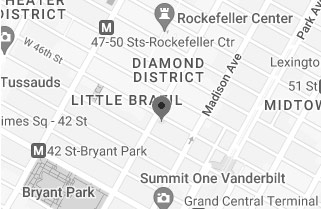The New York Supreme Court, Appellate Division, First Department dismissed an entire personal injury case because the construction worker plaintiff failed to state any claims in his appeal under which he could be entitled to any relief.
The plaintiff was working on a construction site owned by the defendant. The plaintiff stepped on a flatbed trailer that was provided by the contractor in charge of the construction project (not the defendant). The flatbed trailer had a hole on it that the plaintiff did not see. The plaintiff’s leg sunk through the hole, all of the way up to his hip, and he sustained injuries. The plaintiff filed a personal injury case, alleging a variety of Labor Law and Industrial Code claims.
The plaintiff filed suit against the owners of the property and not the contractor in charge of the construction project that had employed him. The defendant was therefore able to show it was prima facie entitled to summary judgment and therefore dismissal of the entire complaint.
In a Labor Law 200 claim, the plaintiff must prove two elements: (1) that the defendant either supervised or controlled the plaintiff’s work and (2) that the defendant had notice of the defect that caused the accident. Labor Law 200 is the common law negligence statute for construction work.
Here, the defendant was a company that owned land and hired a contractor to build property on the land. The defendant was not in charge of coordinating workers, supervising their work, or paying any real attention to the daily goings on of the project, including whether there were holes on flatbed trailers. Those duties were all the responsibility of the contractor. Thus, the plaintiff’s Labor Law 200 claim was dismissed.
The plaintiff also filed a claim under Labor Law 240 (1), which is known as the Scaffold Act. Labor Law 240 requires that contractors provide safety protection and equipment to construction workers who work at elevated heights on construction or renovation projects. Here, however, the plaintiff was not at an elevated height. A flatbed trailer is not the kind of elevated height contemplated by the statute. In addition, the plaintiff did not allege what kind of safety equipment could have been provided on the flatbed trailer to prevent this accident.
The plaintiff also alleged an Industrial Code 23-1.7 (b) (1) (i) violation, which covers hazardous openings at construction sites. However, this statute is meant to protect individuals from completely falling through holes. Thus, the entire body must fit through the opening. The hole in this case was only large enough for a leg. Because the plaintiff alleged the Industrial Code 23.17 violation, he also alleged a Labor Law 241 (6) violation, which requires safety equipment. Due to the dimensions of the hole, this claim was also foreclosed.
Finally, the plaintiff alleged in the appeal a violation of Industrial Code 23-9.2 (a), which covers power-operated equipment at construction sites. The flatbed trailer is not power-operated equipment. This claim is also without merit.
The plaintiff also alleged a multitude of other claims in his original complaint, but because he failed to raise them upon appeal, the First Department refused to consider them. When deciding a case on appeal, an appellate court is only required to consider the issues that were raised in the appellate briefs.
If you or a loved one has been injured in an accident at a construction site, you need the expert personal injury lawyers at the Law Offices of Thomas L. Gallivan, PLLC to review your case. Contact the Law Offices of Thomas L. Gallivan, PLLC today to discuss your potential claims.
Brown v. New York-Presbyterian HealthCare Sys., Inc., 123 AD3d 612 (1st Dept., Dec. 23, 2014).




